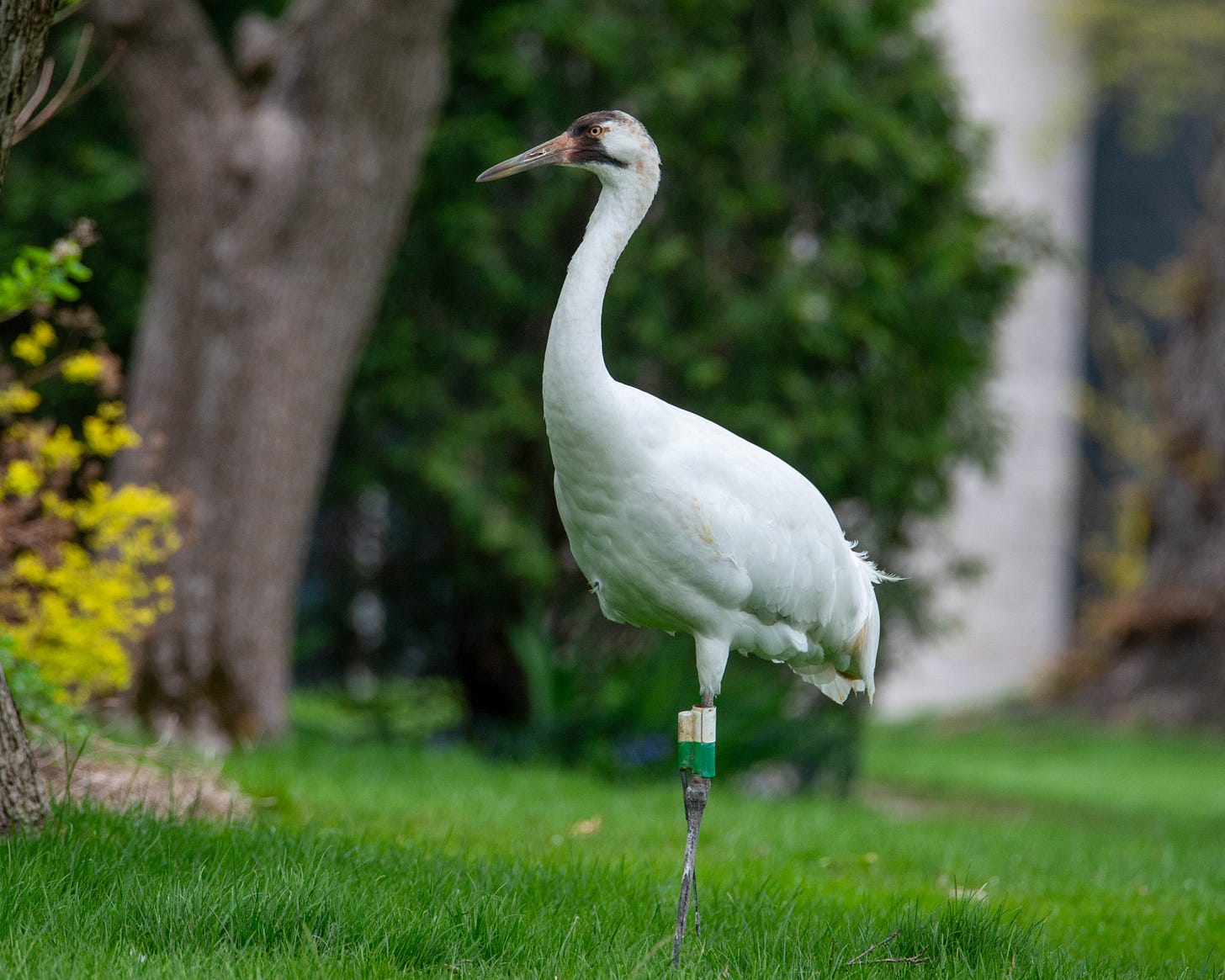Getting steamed about climate
Plus, an event invitation for Paid Subscribers.
“House Wrens arrive on May 1.”
“Redbuds bloom around the time of the Kentucky Derby.”
“Lilacs bloom around Memorial Day.”
These were once axiomatic statements, but that doesn’t seem to be the case any more as winters are milder and spring starts earlier and earlier.
Climate change could be a newsletter topic every week. (If you’re looking for poignant climate posts on Substack, I suggest
and The Planet newsletter.)Climate change can be an overwhelming issue, though. Rather than write about it throughout the year, here are some thoughts in one post. It’s sort of therapeutic to just put this all in one post rather than stew over it for weeks and weeks.
If you want a deeper dive, continue reading. If you can’t take more climate change content or are facing climate change trauma, feel free to log off now.

The evidence of climate change seems to be everywhere now, as it has been really since Al Gore’s An Inconvenient Truth years ago. Just a small example from Alexander Verbeek’s aforementioned newsletter: 365 Days of Record-Breaking Global Sea Surface Temperatures.
Our readers should know that the oceans are central to any climate change story. About 90 percent of global warming occurs in the ocean, fueling an unprecedented surge in sea surface temperatures.
Then there was the news that February 2024 was the warmest ever measured on the planet. Great Lakes ice coverage was nearly non-existent this year and reached a 50-year low. This comes on the heels of Summer 2023 being the hottest summer on record, according to NASA.
I wrote about the mild winter and northern raptors in a piece in February. There are some echoes of that in this more recent Sun-Times story about this spring’s migration. The fact is, birds are arriving earlier. I was surprised to find a House Wren in my back yard on April 14 this year. I checked my records only to find a House Wren arrived on April 15 last year. To paraphrase Vince Lombardi, “What the hell is going on around here?”
Common Loons once bred in Illinois. It’s an astounding fact, as most of us have only experienced these birds on the deep glacial lakes of the North Woods.
Every spring, usually around late March and early April, loons move through northern Illinois in numbers on their way to the breeding grounds. It’s a neat phenomenon that one has to catch on just the right day.
Loons are declining, though, and climate change is the culprit. The Chicago Tribune had a piece highlighting how increased rainfall impacts water clarity and thus loons’ feeding capability in northern lakes.
Then there’s this unfortunate anecdote:
[Piper’s] loon conservation work has also shown that loons abandon their nests when harassed by black flies. Black fly populations have increased in the past few decades in Wisconsin, he said. Their population is boosted by more rain.
In 2020, nearly all loons nesting in 108 lakes abandoned their nests due to black flies, and that is related to climate change, Piper said. “Only three breeding pairs were able to nest because of black flies,” he said.
It’s hard to know how to really act in a way that will make a difference on an issue this vast. There are some people who’ve taken to apocalyptic optimism, but that doesn’t seem for me. Maybe it’s best to remain grateful for the remnants of normalcy we do have—this piece was written on a 49-degree late April day. There may not be an alternative in the current epoch.
Whooping Crane makes suburban detour
And they say nothing ever happens around here…
Two days before Imani the Piping Plover returned to Montrose Beach, a dramatic Whooping Crane rescue took place in the Chicago suburb of Wilmette.
There are only 70 or so cranes left in the eastern United States, many breeding to the north of us in Wisconsin. They are occasionally seen near Chicago during migration, but a whooper walking down a suburban street was quite a surprise.
Word of the bird made it to others on Facebook, and a rescue effort took place that brought together local wildlife officials, the International Crane Foundation (ICF), and birders.
A staff member from ICF donned a crane costume to lure the bird toward safety. ICF staff build up trust with the cranes when they’re young and feed them while wearing the costume.
Once captured, the crane was then transported to Wisconsin’s Horicon Marsh, where it was seen foraging within a day. It’s likely the young crane—which wintered in west-central Indiana, simply veered off course during its migration around southern Lake Michigan.







